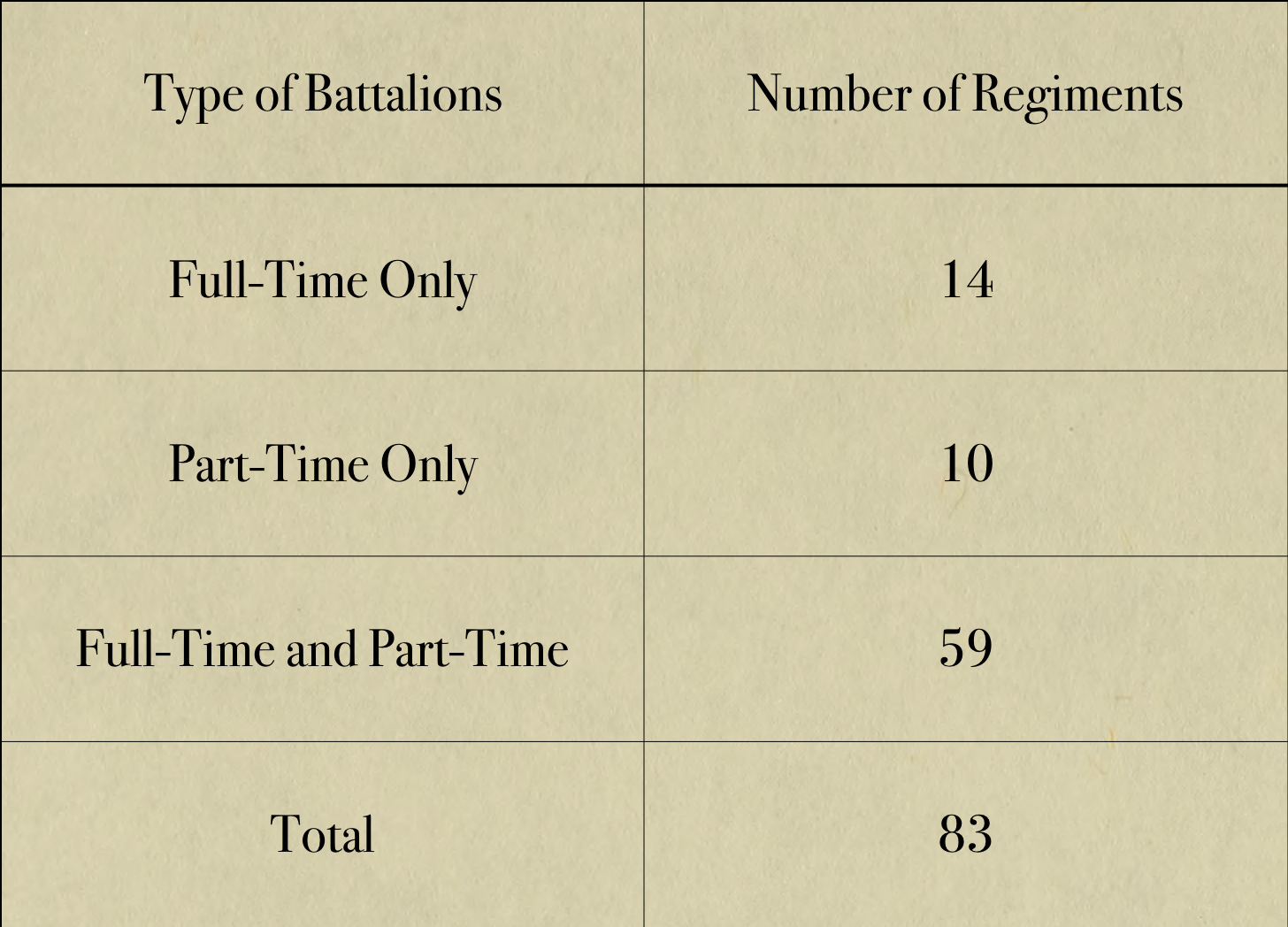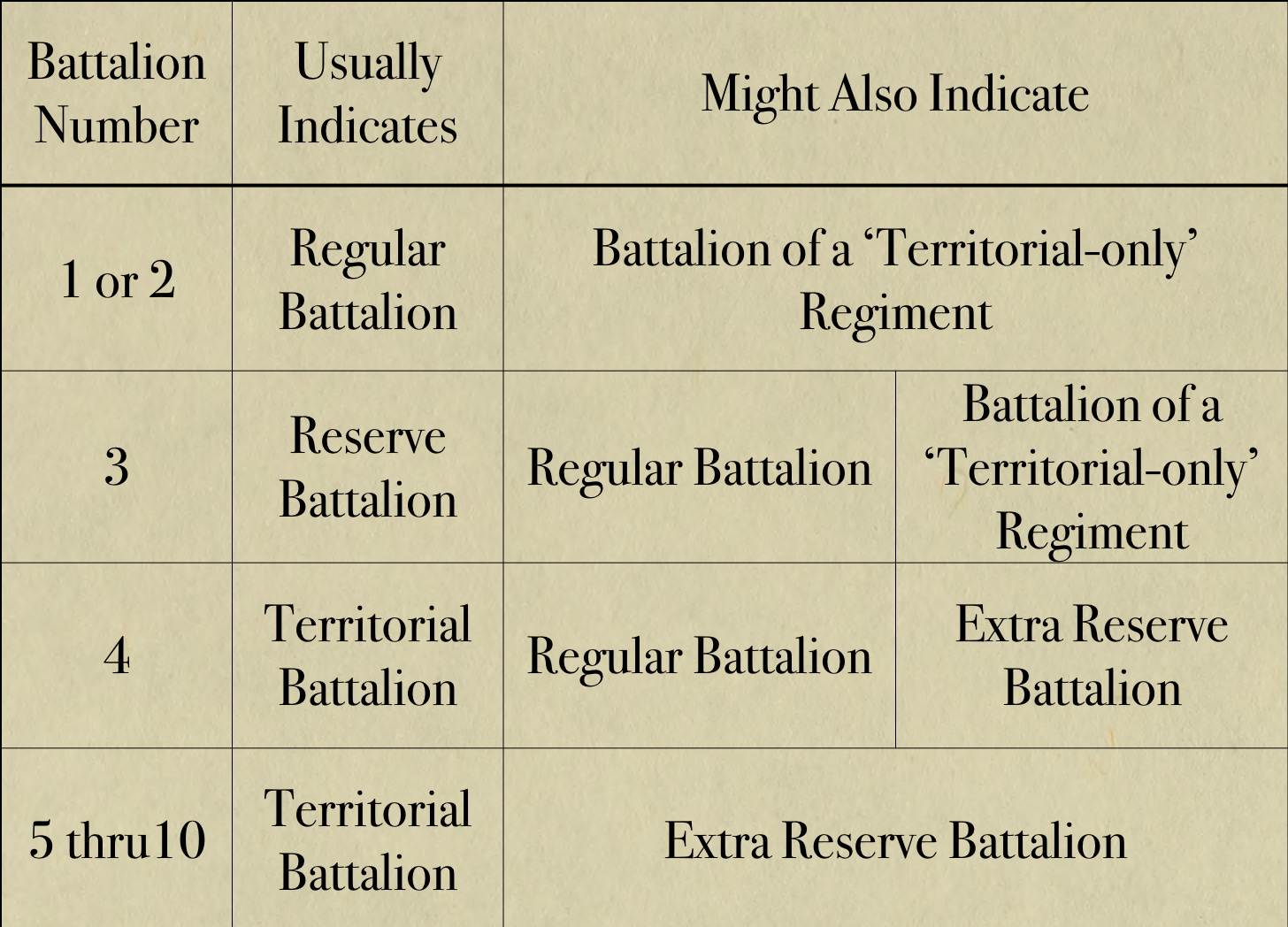As a rule, The Tactical Notebook limits itself to matters overlooked in sources that our readers can easily find elsewhere. From time to time, however, it publishes précis designed to make such information available to readers who are new to the subjects in question.
On the eve of the First World War, British soldiers used the term ‘battalion’ to describe a tactical unit formed upon a standard organizational framework. Thus, when someone in the British Army mentioned a ‘battalion of infantry’, all concerned knew that he was referring to a unit that, at full strength, could put a thousand or so riflemen into a firing line.
Each infantry battalion belonged to an ‘infantry regiment’, an administrative organization that, in most (but not all) cases, drew its recruits from a particular part of the United Kingdom. Fourteen of these regiments, to include all four of the regiments of the Brigade of Guards, were composed entirely of full-time soldiers. Ten consisted entirely of the ‘Saturday evening soldiers’ of the Territorial Force, a body comparable to the National Guard of the United States of the early twentieth century. Most, however, were composite organizations that fielded both battalions of full-time (‘regular’) soldiers and battalions made up men who trained on a part-time basis.
All but one of the ‘mixed’ regiments enjoyed a strong connection to a particular geographical area in England, Ireland, Scotland, or Wales. That is, each battalion drew most of its recruits from that place and, when not serving overseas, occupied barracks in one of its cities or towns. In most instances, these areas corresponded to counties of ordinary size, pairs of small counties, and portions of especially large counties. For that reason, they were often called ‘county regiments’.
The ideal county regiment consisted of two regular battalions (which were invariably known as the 1st and 2nd Battalions), a reserve battalion (the 3rd Battalion), and two battalions of the Territorial Force (the 4th and the 5th Battalions). Many regiments, however, departed from this pattern.
Two county regiments (those based in the cities of London and Manchester) fielded four regular battalions (numbered from ‘one’ through ‘four’), a pair of reserve battalions (numbered ‘five’ and ‘six’), and a large number of Territorial battalions (with numbers beginning with ‘seven’.) A few county regiments with but two regular battalions possessed a second reserve battalion. (This ‘extra reserve’ battalion bore the number ‘four’.) Many county regiments, moreover, provided an organizational home for more than two battalions of the Territorial Force.
Of the infantry regiments bereft of Territorial battalions, four were Guards regiments, one (the King’s Royal Rifle Corps) was a rifle regiment, and eight were based in Ireland. As the Guards regiments made no use of men belonging to the Special Reserve, they only formed reserve battalions in the event of a general war. The King’s Royal Rifle Corps had four regular battalions (1st through 4th) and two reserve battalions (5th and 6th). Each of the eight Irish regiments consisted of two regular battalions and either two reserve regiments or three such training units.
With these things in mind, I offer the following chart, which allows a reader to make an educated guess as to the type of infantry battalion associated with a given number. Please note that these numbers refer to the infantry battalions of the British Army of the years between 2 August 1907 and 1 August 1914. (For a guide to the numbers used by the many wartime battalions formed after mobilization, please see the next article in this series.)
To be continued …
For Further Reading:
To Share, Subscribe, or Support:












The Irish regiments were also a mix of town, county, and regional titles
The local system produces strong cohesion and good units to this day in the National Guard.
It feeds it seems into the active army, the Communities in Killeen County Texas (Ft Hood) and Cumberland County (Ft Bragg).
‘each battalion drew most of its recruits from that place and, when not serving overseas, occupied barracks in one of its cities or towns.’